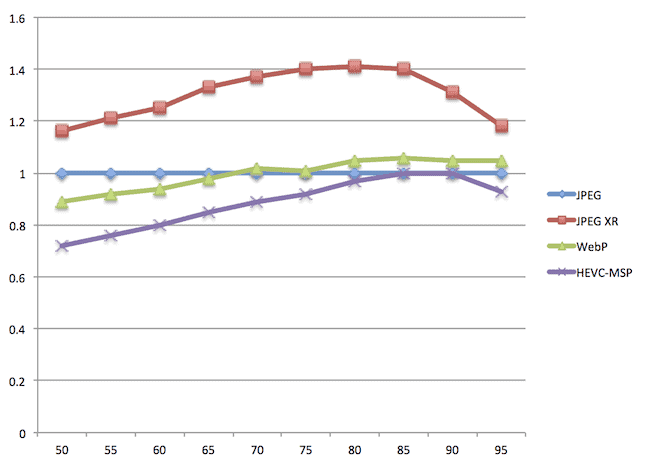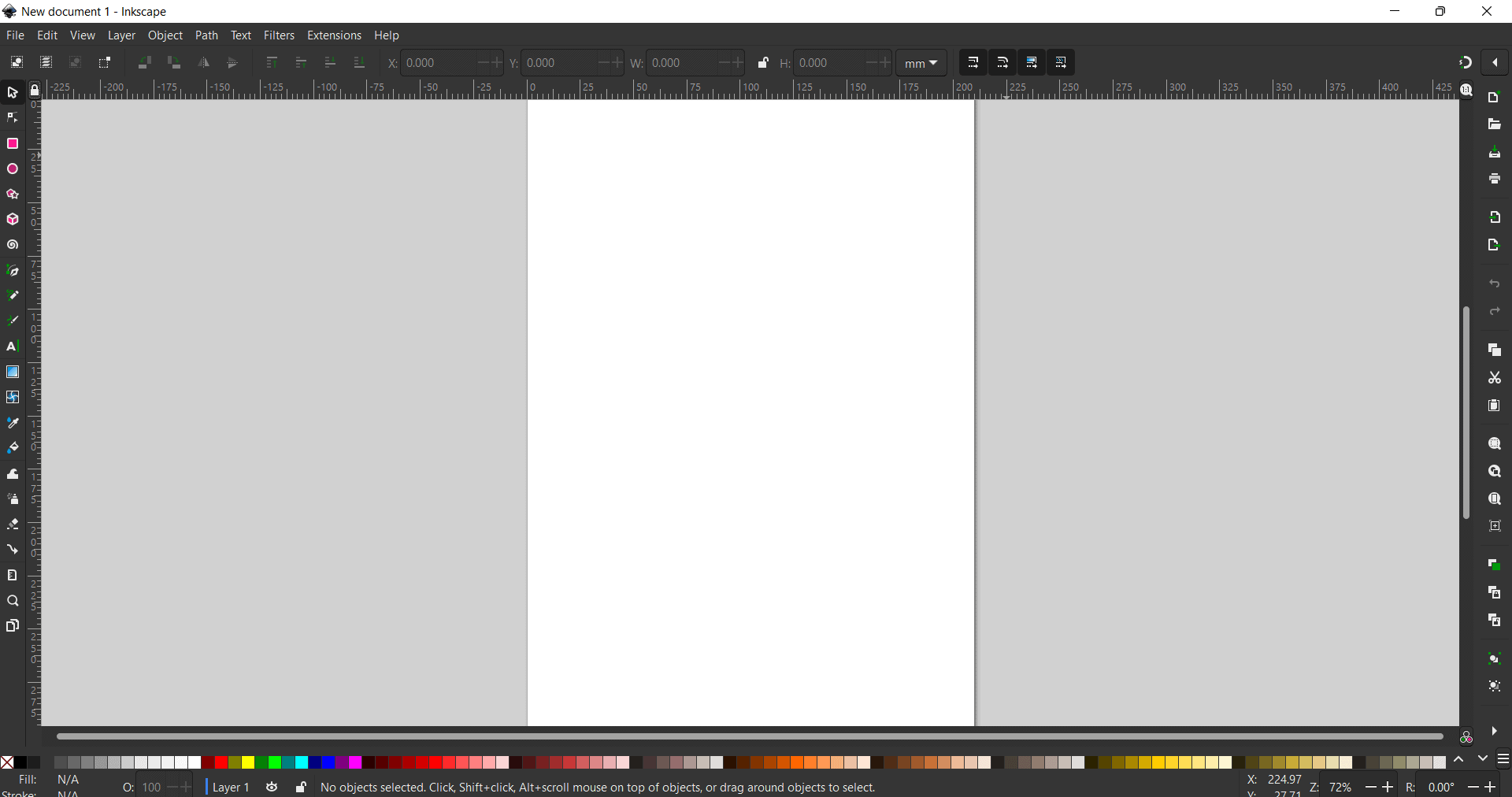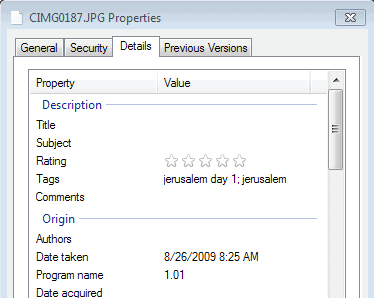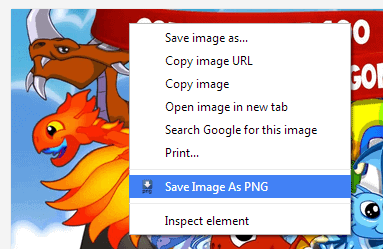The search for the image format of the future continues

Images are an essential part of nearly every Internet website and service. We have seen progress in other areas of interest in regards to web formats. There is a lot going on when it comes to video formats for example, with new formats promising better quality, lower file sizes and better performance.
When it comes to image formats, the web is still relying on formats that were introduced in the beginning days of the Internet. The popular jpeg image format was introduced back in 1992 while the png image format made its debut in 1996.
These standard formats are supported by all modern web browsers and most websites use them when it comes to displaying images on their sites.
Recently, companies have started to look at successor formats that in regards to jpg, that offer better compression and at the very least an equal image quality.
Google's WebP format is one of those candidates. It is already tested in the wild on Google properties mainly, where the format is served to Chrome users exclusively (if you connect with a different browser, say Firefox, you get png or jpg images instead).
While it is clear that Google will push the company's own WebP format as best as it can, other browser developing organizations and companies are not as quick to adopt. One of the main reason here is that WebP is no the only format that promises better compression ratios.
Mozilla conducted a study recently that analyzed the compression quality of four different image formats: JPEG XR, WebP, HEVC-MSP, and the standard JPEG format to establish a baseline. The study itself only looked at the lossy image compression efficiency of said formats, and not at other metrics and data that matters. In particular, it did not include feature sets, performance during run-rime, licensing or time to market in the study.
According to the study, HEVC-MSP performed best in most tests, and in the tests that it was not best, it came in second to the original JPEG format.
Mozilla, which rejected to include the WebP format previously in the Firefox web browser, is still considering adding support for it to the browser, especially since popular third party websites such as Facebook have started to make use of it.
One should not read too much into the study. It is a limited test that looks only at the compression quality and not at other metrics that may be of equal importance.
The quest for the image format of the future continues.
Advertisement





















APNG is definitely the future, for all of the reasons listed here:
http://www.kickstarter.com/projects/374397522/apngasm-foss-animated-png-tools-and-apng-standardi
GIF Movie Gear, which is my favorite GIF tool, has apparently had APNG support since 2008.
http://www.gamani.com/apng.htm
Nearly all versions of Firefox from version 3+ support APNG, and apparently Chrome can also support APNG through a plugin:
https://chrome.google.com/webstore/detail/apng/ehkepjiconegkhpodgoaeamnpckdbblp
Agreed, APNG is a format that would give immediate benefits over GIF, and fallback to static PNG (1st frame) where not supported.
The recent activity around apngasm raises some hope, but integration into BLINK at least, if not WebKit would make a significant difference.
Still hoping chrome supports APNG soon.
Anyone interested in wasted bytes should look beyond image standards, over which they have little control, and instead see if their own personal emails go out in duplicate, sent simultaneously as text and also as HTML. Plain text gets the message across efficiently, but here comes the email response with a duplicate copy in HTML, ten times the size of the plain text copy, and with duplicate copies of my original message to boot! Why assume I can’t remember what I just said, unless I ask for that “reminder service” from correspondents?
My solution is to have email client defaults changed to “plain text only” and “do not include original message in the response”. Many users never look at the options over which they are allowed have control. Defaults are important!
I would personally prefer another format than WebP. Google is an ad-company and may at any point pull the plug if it wishes – like it did for Google reader or WebM.
You really need to apply some critical thinking before you open your mouth. How do you shut down a service that isn’t a service? I’m not neither for nor against WebP, but saying “they can pull the plug” doesn’t make any sense as its an open standard that anyone can choose to support or not. You can’t “pull the plug” on something like that.
I think lossy compression is 90s technology when the web was slow, clunky and dial-up. Lossless image compression is the future.
GK: Well, WebP actually does both lossless and lossy, and the same identical pixel-for-pixel image will be roughly 30% smaller in WebP than in a PNG (I’ve tried it on all sorts of PNGs of over a wide range of megapixels, about 30%). Dipping into lossy, the savings are obviously much larger, and the audience is none the wiser — and if one used PNG just for the alpha transparency and did not need losslessness, WebP can do that mixture of JPEG and PNG and save bytes too.
A large concern is striving to make your website load within a single second. Even with a top shelf phone in the same country as your server and a simple static site that is very challenging. Even with a basic WordPress site and someone with a broadband connection that is not easy. Every hundredth of a millisecond longer than that and there is a measurable impact on your bounce and conversion rates.
More and more web visits are made over cellular connections, which are slow in both throughput and latency and capped or metered. Slow load times over a long period of time can cause permanent damage to your traffic and engagement. Since images make up around 60% of the bytes of today’s typical webpage, to save 30% whether for lossy or lossless, even if Firefox doesn’t support it yet, is a big deal and worth doing, and it’s getting less difficult (see mod_pagespeed, which lets you implement WebP and other goodies without having to do any extra work other than installing the module).
Martin:
> it is clear that Google will push the company’s own WebP format as best as it can
Sounds a little cynical. Maybe if the file extension was .goog instead of .webp I’d see your point but know what interest Google has in having an open and free image format gain popularity that they developed. I can see their interest in websites, including all of theirs, loading faster and requiring less resources across the board being quite compelling, enough to develop the format that can make that happen the best. Same with SPDY and QUIC. If Microsoft’s counterparts to Google’s goods on their Make the Web Faster site were superior to Google’s, and they were also free and open, why wouldn’t Google use it themselves and even help evangelize it? No one is going to buy Google shares just because Mozilla announces one day they’re adopting the format, and I’m pretty sure Google won’t extort the entire web one day to pay fees. I think they just want the web to go faster and more securely (uProxy). They weren’t involved with HSTS’s development, but they use it.
We won’t know what would happen if WebP and friends came from Microsoft, because it is Google, not Microsoft, that has the history of delivering things that make the web faster, with Microsoft catching up two years later. And God knows why, but Mozilla has dug in their heels on this three-year-old “bug” ticket to render WebPs in Firefox. It’s not a technical hurdle that’s keeping them from doing this — there are modified Firefoxes, open source, that have WebP support and they work just fine, apparently it’s quite easy to patch any version of Firefox that pops up to support WebP and compile it for every platform. If one of these other formats in the charts does one thing better than WebP, why not adopt them both (even though WebP has the best shot of gaining traction, given the progress its already made as you noted in being used by marquee sites).
Someone said newer doesn’t necessarily mean better — keep in mind the dates here, GIF is from 1989, JPEG is from 1992. Much has happened since, over two decades for engineers to come up with much better math which they did, combining the features unique to each of these formats into one. Studies from Google, Microsoft and others regarding how expensive just a couple hundredths of a second on each pageview can cost your business came somewhat recently. We’re not talking about mousetrap developments. Perhaps one day Google will add vector image support into the format, and then maybe CAD-like support, all one format, no decisions needed to be made anymore. Perhaps we’ll see cameras soon, like on a Nexus phone, save in WebP by default. If it gains traction, slowly but steadily less of a need to transcode, no need to install Windows and Photoshop WebP codecs and plugins.
Because Google websites, Facebook, Wikipedia, soon Netflix, because the most popular websites use these free beer Google technologies, the browsers that support such technology as WebP, SPDY and QUIC, namely Chrome (presently the most popular I believe), may be associated in consumers as the faster browser, meanwhile browsers that do not take advantage of these things soon could stand to lose. Thirty percent here, half the round trips of packets there — these things add up into noticeably better products, services and user experiences. If it’s a pride thing, or “political” as I’ve seen claimed on Bugzilla, when Google has the only browser that continues to gain market share, it just doesn’t make sense – to me at least – not to get with the program and do everything you can to make your product better.
Mozilla… Daft obstructionists, at least with respect to image storage and transport efficiency, which indeed is a big deal. Many including I believe that if they’d just get with the program, Microsoft and Apple would follow suit and the world would be a wonderful place. so this is truly confounding. Look how many paragraphs I wrote.
Decent article. Putting ghacks on my RSS because of you (found this on my WebP section of Google News).
Doug Simmons
While I do agree with you when it comes to photographs, videos, and audio, I don’t believe lossless images are needed for website design. It makes website downloads inefficient.
Also, 90s styles were a lot different back then, with screens averaging about 800×600 or smaller. Sites were much smaller, and mostly text with pictures (gif & jpg). Nowadays sites have a whole bunch of crap in them that slows them down, with flash, javascript, etc.
I was thinking that, they’re about 13 years too late. Why are they thinking of a new image format now, when internet speeds are continuously getting faster/more efficient and storage space cheaper? It will just add another file format to worry about becoming obsolete.
I’m using WebP on everyday basis as part of Opera Turbo/off-road tech, and most of savings in my mobile net traffic comes from that (WebP compression). Sometimes differences from original Jpeg/PNG goes to 25-30 times smaller file in WebP, usually 2-3 times.
This post is not for glorifying WebP/Google, I don’t have experience with other “new” formats.
Just wanted to say that this fairly simple switch from jpg, png and in some cases even bmp formats to new one as a standard, could save a lot of global Internet traffic.
It’s just, does assholes needs to agree what will became new standard. And that is politic, lobbying, money…
*those assholes :)
Just because a file format is old, that doesn’t mean that is not good anymore. Sure, any progress made by someone when it comes to image compression while maintaining a good quality is to be applauded, but it looks like this “old” argument is used by big corps (like Google) to “push” their own format.
You are right, age should not play a role in the equation. I merely pointed that out to show how long these formats have been the dominant format on the web.
You would assume that a more efficient format would have been created in the last 20 years.